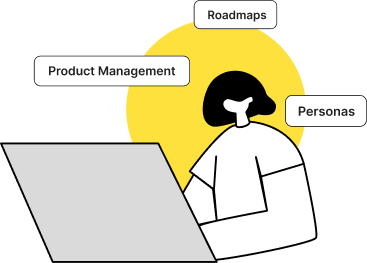Surveys are a quick and easy method of engaging your audience in an open, honest conversation about their experience with your product and what more they expect from it. However, structuring your survey correctly and figuring out what to ask your customers can often be an overwhelming challenge.
Well, we are here to help! Presenting a list of impactful questions to assist you in building kickass product surveys —
#Retention — How often do you use our product?
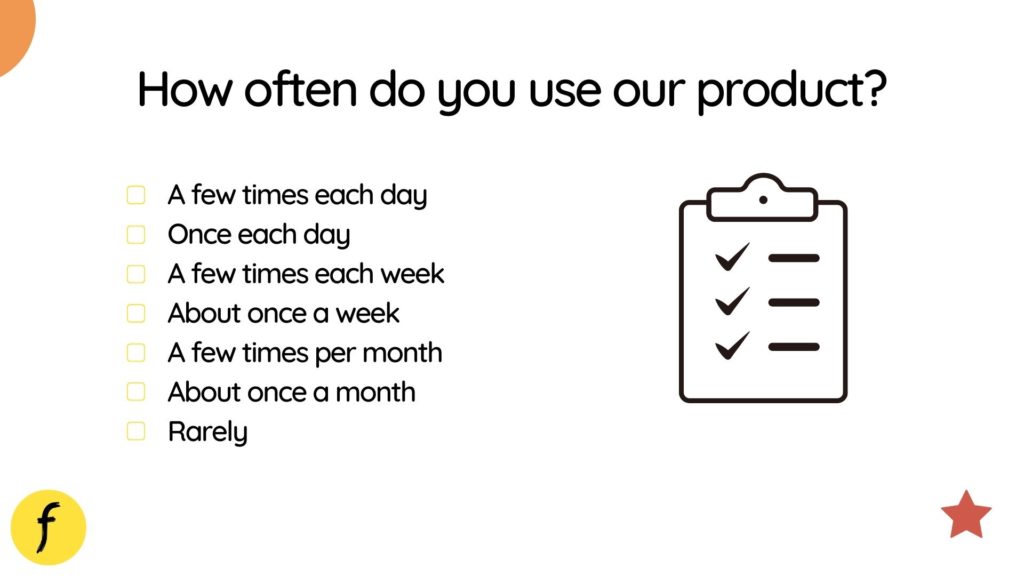
This question allows you to gauge how relevant your product is to customers and if it meets their expectations. A positive response indicates that you’re doing well and your product is working as intended. However, if respondents tell you that they rarely use your offering, it could mean two things:
a) Your product is lacking and does not help users achieve their goals
b) You may have just missed the mark with your marketing
If it’s the former, add a follow-up question and ask customers what, according to them, could you do to improve their experience with your product. Getting inputs directly from customers about what matters to them most can help you narrow down what aspects of your product need more work.
If it’s the latter, review your marketing strategy and see if your core messaging is appealing and engaging enough for your target audience. Your marketing efforts should demonstrate how you are solving/planning to solve major pain points for consumers and what additional value you provide them. Once you do that, you are bound to see a jump in customer retention.
#UserExperience — How was your experience with our product?
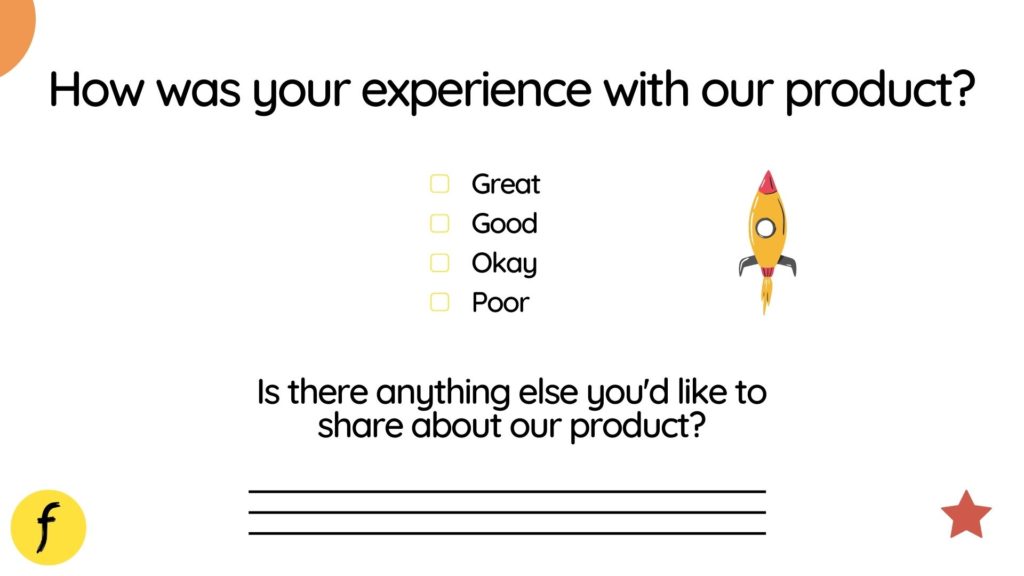
There are two ways you could go about it. One, ask them to rate their experience on a scale of 1-10 (or 1-5, if you prefer). Two, keep it open-ended and give your customers the freedom to express themselves. They may provide you with details that you would not have otherwise expected.
#Roadmapping — What feature(s) did you like the most?
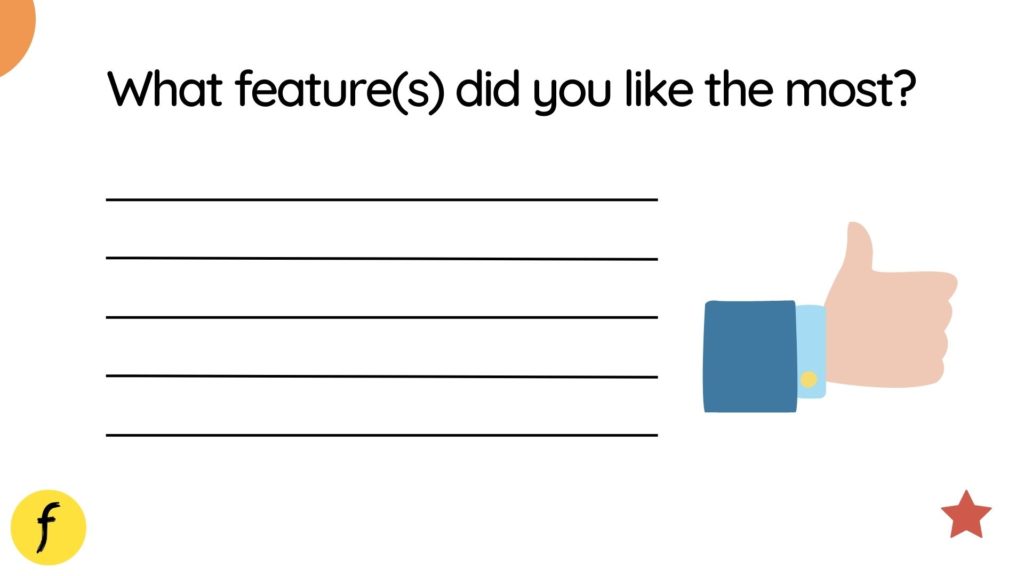
The goal here is simple: identify which aspects of your product your customers find the most valuable. Let me tell you — this question is bound to take you on a rollercoaster ride. Your flagship feature (the one you spent countless sleepless nights developing) may not even be what’s keeping them hooked to your product. Instead, it could be something you put in as an afterthought or considered a minor add-on.
#Churn — What essential features are we missing?
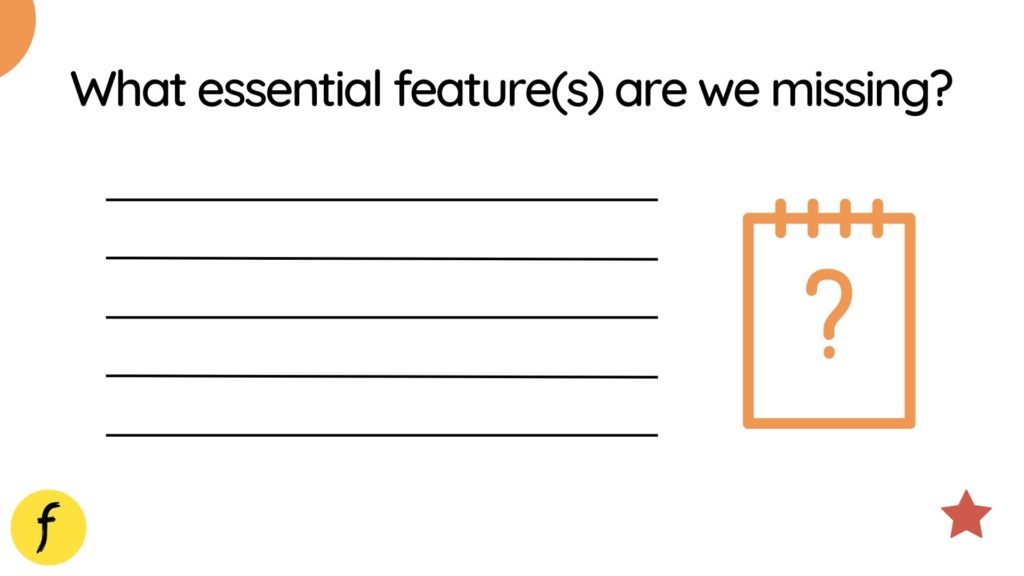
Alternatively, you could also ask them — What is the one thing that would make the product better?
The best way to find out what your customers want from you — ask them directly! Their responses will help you identify which features you need to include in your roadmap ASAP to prevent/reduce churn.
#Usability — Did you find our product easy to use?
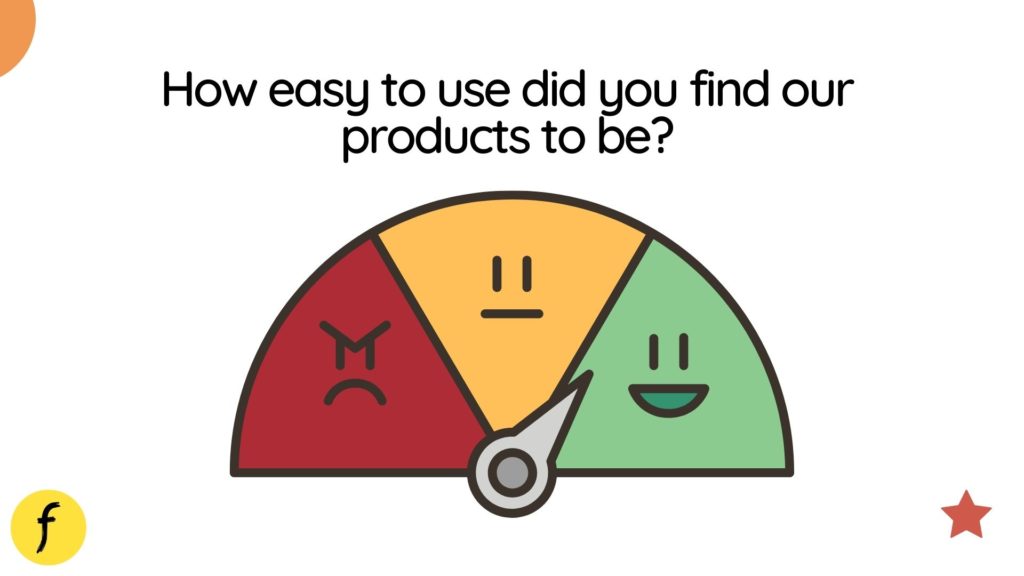
Ask your customers to rate the usability of your product on a scale from “super-easy” to “extremely difficult.”
If respondents rate you low on the usability scale, consider adding an optional follow-up question asking them what they think would improve the usability of your product. Their responses might reveal small details or enhancements that you might be able to implement relatively quickly.
#CSAT — Are there any problems/bugs you would like to bring to our attention?

Let’s face it — every product has a few bugs, and people who use your product regularly are bound to have come across a few. Once you identify what minor (or deal-breaking) inconveniences your customers face, you can begin to fix them. Undoubtedly, it will help you build a more polished product and deliver a solid, cohesive experience to your customers.
#NPS — How likely are you to recommend this product to a friend or colleague?
Ask respondents this question on a 1-10 scale. It will help you calculate your NPS (Net Promoter Score), an important metric indicating customer satisfaction. Here’s how to calculate your NPS score:
[ % of Promoters – % of Detractors ] = Your NPS Score
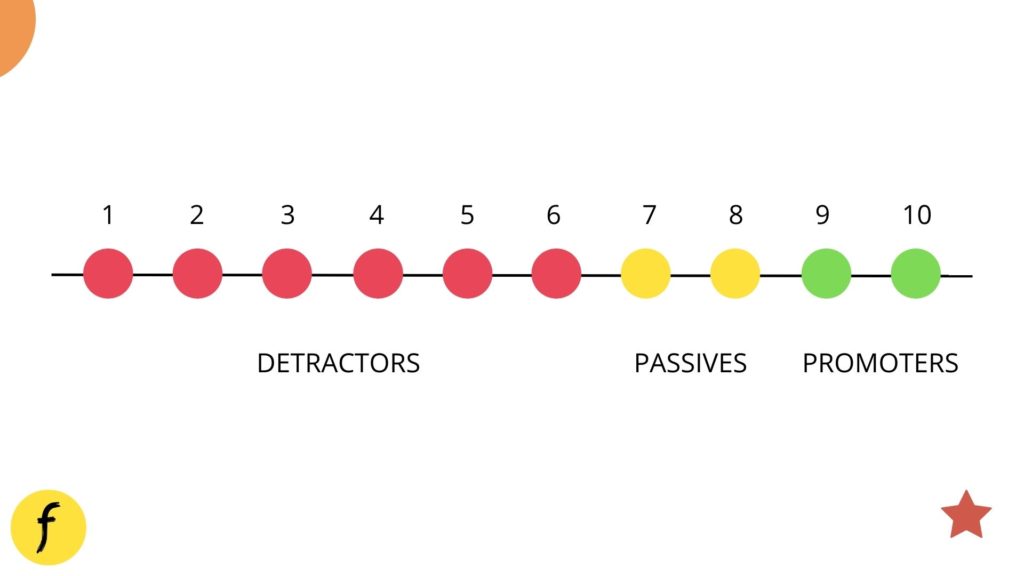
For example, if 70% of survey respondents are promoters, 10% are neutral, and 20% are detractors, your NPS score will be:
70% – 20% = 50
Your NPS score is 50!
Generally, a score of 50 and above is a solid place to be. The higher the number, the more satisfied your customers are with the overall experience that you offer with your product/service. It would also mean that you have more people advocating for your product, which is a great sign! WOM (word-of-mouth) marketing is a significantly more powerful tool than most people think. Think about it — if a trusted friend or colleague were to recommend a product to you, you would be more inclined to give it a shot than if you saw an ad or heard about it from a random stranger on the Internet, right?
On the other hand, if you have a low score, you need to reflect upon where things have gone wrong. Again, ask them what you could do to improve their experience with your product. Once you have their inputs, assure them that their feedback is heard and understood, and that you’ll be taking the necessary steps to serve them better in the future.
#Product-Market-Fit — If our product was no longer available, what would you use as an alternative?
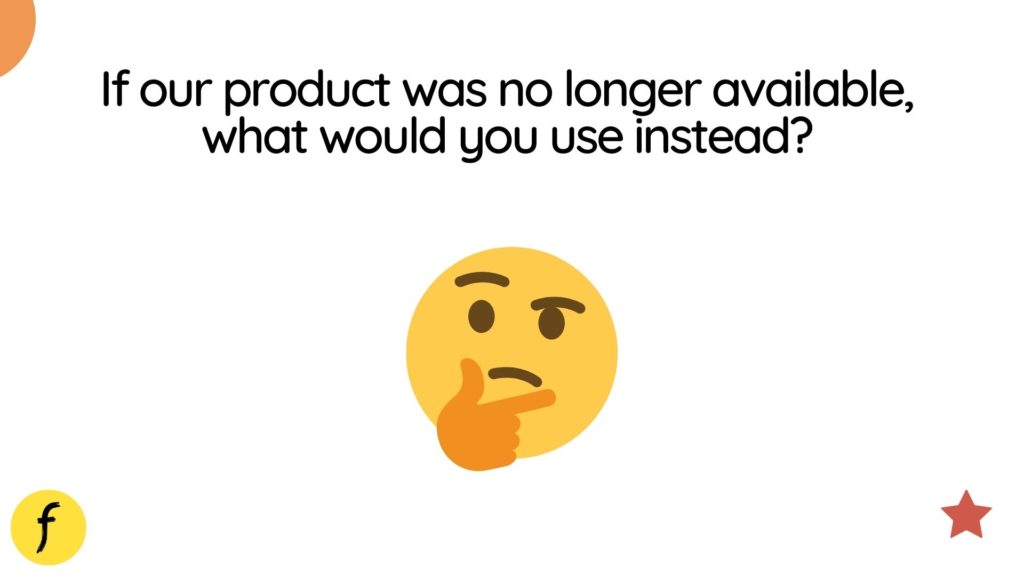
This question helps you identify who your audience considers your biggest competitor. Now, scout your competitor and assess how they go about their business. Once you know who you are up against, it becomes easier to figure out how to distinguish yourself from them.
To Conclude:
Surveys can give you tons of actionable insights into improving the overall customer experience. However, it is vital to remember — the key to building an excellent survey is asking the right questions, not more questions. Keep things simple, ask direct & to-the-point questions, and use a mix of both open and closed-ended questions to strike a balance. Open-ended questions give you qualitative insights, while closed-ended questions are easier to analyze and fetch you a higher response rate. And last but certainly not the least — keep your survey short! Figure out your goal and plan out which questions you need to ask your customers accordingly. You need not include every question from the list above, just the ones you need answered right now.
As for tools — You can use popular, tried-and-tested platforms like Typeform, SurveyMonkey, Qualaroo, and Wootric to conduct NPS, CSAT, and CES surveys. Also, there are always the good ol’ fashioned Google Forms! 🙂
Next steps: build your survey and start your feedback journey now! Let us know how it goes!
